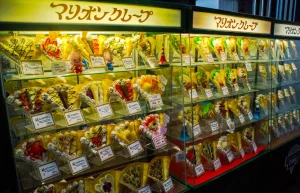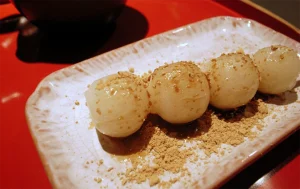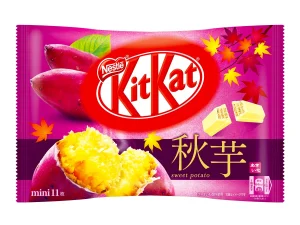Have you ever wondered why Hawaiian food tastes somewhat like Japanese food? You’re not alone. Many people notice these flavors and want to learn more about them. One key fact here is that Japanese traditions and ingredients have greatly shaped Hawaiian cuisine due to historical migration.
This article explores the blend of Hawaiian and Japanese cuisines. It shows how these worlds combined to create a unique, delicious fusion.
You will learn about key dishes and cultural fusion’s impact. This blend appeals globally, especially in Japan. Ready for a flavor journey? Keep reading!
Table of Contents
ToggleKey Takeaways
- Hawaiian cuisine has flavors like Japanese food because of the historical migration of Japanese immigrants. They brought their cooking styles, ingredients, and customs to Hawaii.
- Soy sauce, rice, and seafood are common in Hawaiian and Japanese dishes. This mix creates unique fusion foods like Spam Musubi and Loco Moco, which combine tastes from both cultures.
- Hawaii’s “plate lunch” concept takes inspiration from the Japanese bento box. It shows how Japanese meal traditions have influenced Hawaiian eating habits.
- Saimin is a popular noodle soup in Hawaii. It reflects Chinese, Filipino, and Japanese influences and symbolizes cultural fusion in Hawaiian cuisine.
- Joybox introduces people to Japanese snacks and toys, highlighting their popularity in Hawaii due to shared tastes between Japanese and Hawaiian food cultures.
Understanding Hawaiian-Style Food
Hawaiian-style food features unique ingredients and popular dishes. The dish features Hawaiian flavors like poi, barbecue, and taro plants.
Key Ingredients
Hawaiian-style food mixes many cultures in its dishes. Ingredients come from all over, including Asia, Europe, and Native Hawaiian traditions. Here’s a look at some key ingredients:
- Taro
This starchy root is native to Hawaii and is the base for poi, a traditional dish. Taro leaves also wrap foods like laulau, adding a unique taste. - Seafood
Fresh fish like yellowfin tuna feature in poke bowls. These raw fish salads show Hawaii’s love for ocean bounty. - Rice
Brought by Japanese immigrants, rice is now a staple in Hawaii. It pairs with everything from plate lunches to sushi. - Spam
This canned meat became popular during World War II. Spam musubi, a sushi-like snack made with Spam and rice, is a favorite. - Pineapple
Pineapple, once grown in Hawaii, adds sweetness to dishes and drinks. - Beef
Beef in burgers, such as loco moco, shows American influence in Hawaii. - Soy Sauce and Sesame Oil
These Asian condiments season many dishes, from stir-fries to marinades. - Sweet Potato
The Polynesians brought sweet potatoes. Many dishes use them. - Char Siu Pork
This Cantonese-style barbecue pork blends into Hawaiian cooking through dishes like Managua. - Kukui Nuts
Not only for lei making; roasted kukui nuts or candle nuts add crunch and flavor to poke bowls. - Macadamia Nuts
Now synonymous with Hawaii, these nuts top desserts or serve as snacks.
Each ingredient brings flavors or techniques from different cultures together. They make Hawaiian food unique and loved by many around the world.
Popular Dishes
Hawaiian-style food blends flavors from many cultures. Its dishes are famous for mixing Asian and Western tastes.
- Poke Bowls consist of tuna mixed with soy sauce, green onions, and sesame oil. This mix sits on a bed of rice.
- Lū‘au: At these feasts, guests enjoy kālua pork. Cooks wrap it in banana leaves and slow-cook it in an earth oven, which gives the meat a smoky flavor.
- Plate Lunch: A hearty meal that includes two scoops of rice, macaroni salad, and an entrée like teriyaki beef or fried fish. It shows the love for generous portions.
- Loco Moco: A comfort dish featuring white rice topped with a hamburger patty, a fried egg, and brown gravy. It’s a rich blend of American fare with local taste.
- Saimin: This noodle soup combines influences from Japanese ramen, Chinese mein, and Filipino flavors. It usually has char siu bau (roast pork), kamaboko (fish cake), and green onions in a savory broth.
- Spam Musubi: A snack made by placing grilled Spam on top of a block of rice and wrapping it together with nori (seaweed). It’s a simple yet popular dish that reflects Hawaii’s love for canned meat.
Each dish tells the story of different people making Hawaii their home. They also show how locals use what’s around them – from fresh seafood to tropical fruits.
The Japanese Influence on Hawaiian Cuisine
Japanese immigration altered Hawaiian cuisine. Japanese cooking techniques influenced the preparation of dishes. Flavors fused, creating unique Japanese-Hawaiian fusion dishes like Spam Musubi and Loco Moco.
Impact of Japanese Immigration
Japanese immigrants began arriving in Hawaii around the late 19th century. They came mainly to work on sugar and pineapple farms. With them, they brought their cooking styles, ingredients, and customs.
This had a big impact on Hawaiian food culture. Ingredients like soy sauce and rice became staples in local cuisine. Many people widely adopted cooking methods like stir-frying and grilling fish.
These immigrants also introduced dishes that evolved into Hawaiian classics. One example is spam musubi, a fusion of canned meat with sushi rice and seaweed. Japanese festivals also became part of local culture, further blending culinary traditions.
Over time, this blend gave rise to a unique style of cooking—Hawaiian regional cuisine—that highlights both local ingredients and Japanese flavors.
Adapting Japanese Cooking Techniques
Japanese cooking techniques have influenced Hawaiian cuisine, adding a layer of complexity and flavor. From the art of tempura frying to the precision of sushi making, these methods have permeated the culinary landscape of Hawaii.
Using umami-rich ingredients such as miso and soy sauce in marinades and sauces has become a hallmark of Hawaiian-Japanese fusion dishes like Spam Musubi and Loco Moco. Furthermore, iconic Hawaiian dishes like teriyaki chicken and grilled fish use grilling and broiling, which are fundamental to Japanese cuisine.
This blending of traditional Japanese cooking methods with local Hawaiian produce has created an enticing array of flavors that captivate palates worldwide.
The Fusion of Flavors
Hawaiian cuisine is a melting pot of flavors, blending influences from diverse Japanese, Portuguese, and American cultures. The fusion of Japanese culinary traditions contributes to Hawaii’s unique and popular dishes.
This blend incorporates a wide variety of seafood, beef, and tropical ingredients into dishes like Spam Musubi, Loco Moco, and Saimin – which showcase the harmonious marriage of Japanese and Hawaiian influences.
The fusion brings forth an array of delectable flavors that captivate locals and visitors with their enticing aromas and vibrant tastes. The influence extends beyond flavor; it encompasses the artful presentation and innovative cooking techniques defining Hawaiian cuisine’s rich tapestry.
Joybox explores Japan’s snacks and toys, which are related to the popularity of Japanese snacks in Japan and Hawaiian food.
Joybox offers an exciting selection of Japanese snacks and toys, providing a delightful way to experience the unique flavors and culture of Japan. This subscription service delivers diverse traditional and modern treats, including popular snacks like mochi, onigiri, and sweet and sour candies.
Alongside these delectable goodies, Joybox includes charming Japanese figurines and trinkets that will captivate enthusiasts of Japanese pop culture. These offerings provide a taste of Japan and serve as a testament to the enduring popularity of Japanese snacks in Hawaii.
Through Joybox’s curated selections, subscribers can savor the essence of Japan while uncovering its fascinating world of snacking pleasures.
Entities:
- Joybox (Japanese Snack Subscription Service)
- Mochi (Japanese Rice Cake)
- Onigiri (Japanese Rice Ball)
Why is Hawaiian Food Popular in Japan?
Hawaiian food is popular in Japan due to the similarities in taste and presentation and the influence of concepts like “plate lunch” and bento boxes. To learn more about this intriguing culinary crossover, read for a deeper insight into the fusion between Japanese and Hawaiian flavors.
Similarities in Taste and Presentation
Japanese and Hawaiian cuisines share striking similarities in taste and presentation. Both use seafood, beef, and pineapple for bold flavors.
In terms of presentation, both cuisines focus on pleasing dishes that showcase the vibrant colors of fresh ingredients. The fusion of Japanese cooking techniques with native Hawaiian elements has created unique dishes like Spam Musubi and Loco Moco, which people love for their delicious flavors and attractive plating.
Hawaii’s blend of culinary traditions has created a unique and popular cuisine. It attracts a broad audience locally and globally.
Concepts: Japanese Cuisine, Hawaiian Cuisine
Influence of “Plate Lunch” and Bento Box Concept
The “plate lunch” concept, a beloved Hawaiian tradition, has its roots in the Japanese bento box. Japanese immigrant workers influenced Hawaii’s plantation meal traditions by bringing their food traditions.
The plate lunch features an assortment of dishes like teriyaki beef, chicken katsu, and rice topped with a generous helping of macaroni salad. The convenience and assortment of bento boxes inspired the quick meal.
L&L Hawaiian Dining Cafe’s popular plate lunches led to its expansion into Japan. They combined local flavors with an adaptable dining style.
Unique Examples of Japanese-Hawaiian Fusion Dishes
Spam Musubi, Loco Moco, and Saimin blend Japanese and Hawaiian flavors to create unique fusion dishes. Explore the article to learn more about these mouthwatering combinations.
Spam Musubi
Spam Musubi is a Hawaiian snack with grilled Spam on sushi rice and nori. During World War II, Spam was widely available. This snack combines American and Japanese flavors.
The perfect blend of savory and salty Spam combined with the sticky texture of rice makes it a delightful treat both locals and visitors appreciate. Beyond Hawaii, its popularity has spread to other parts like Japan.
The legacy food item showcases the blending of Asian and Western cultures. It includes rice, nori, and canned meat.
Loco Moco
Transitioning from Spam Musubi to Loco Moco, let’s explore another classic Hawaiian dish. Loco Moco is a comfort food. It includes white rice, a hamburger patty, brown gravy, and a sunny-side-up egg.
This hearty meal originated in Hilo, Hawaii, around the 1940s and has become an iconic staple of local cuisine.
Derived from “loco,” meaning crazy or wild in Spanish, this dish exemplifies the fusion of tastes found in Hawaiian cuisine. It showcases influences from American diner fare and Japanese flavors while embracing locally sourced ingredients such as ground beef and eggs.
Saimin
Transitioning from the savory goodness of Loco Moco, Saimin is another prominent dish from fusion of Japanese and Hawaiian culinary traditions. This beloved noodle soup mirrors the influence of various Asian cultures on Hawaiian cuisine, with roots traced back to Chinese, Filipino, and Japanese immigrants.
Saimin includes wheat egg noodles in a tasty broth. It comes with char siu, green onions, kamaboko, and sometimes Spam.
The dish presents Hawaii’s melting pot culture by incorporating diverse ingredients in a comforting and satisfying noodle soup.









